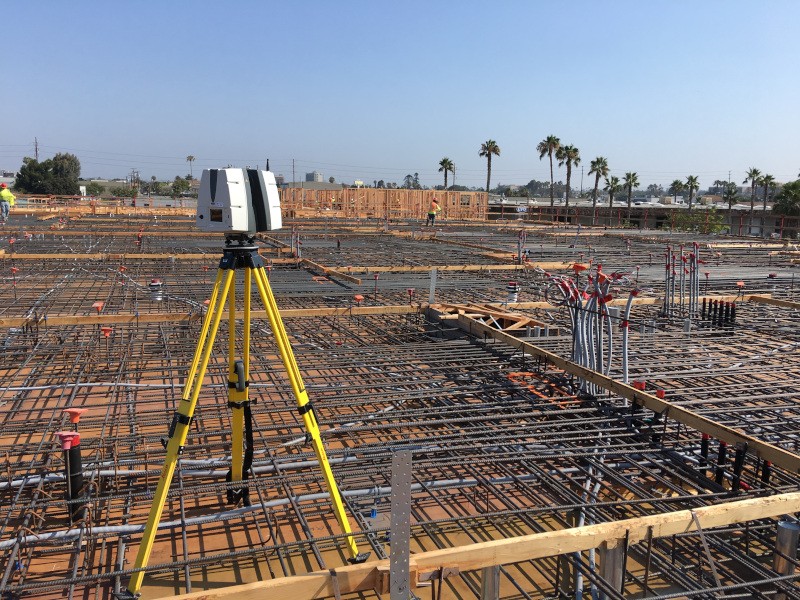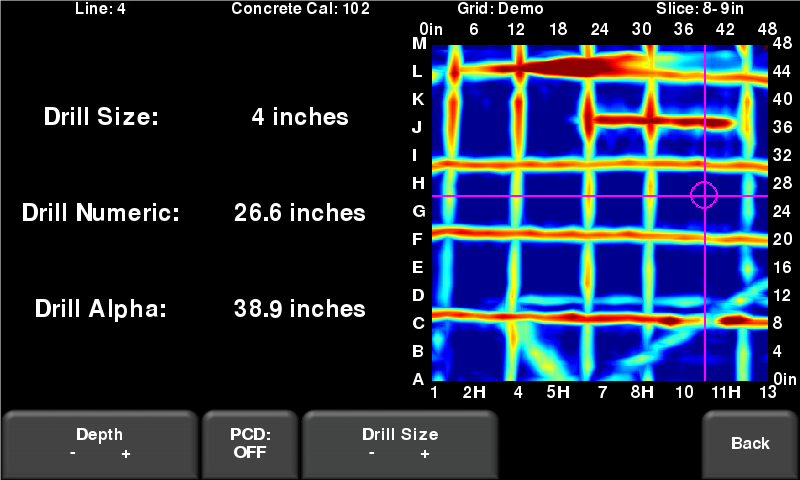Quality Assurance via Concrete Scanning and Imaging
Wiki Article
The Future of Concrete Evaluation: Ground-Penetrating Radar (GPR) Scanning Introduced
The future of concrete analysis is below, and it's called Ground-Penetrating Radar (GPR) scanning. Discover the applications, advantages, and obstacles of GPR scanning in concrete evaluation, and obtain prepared to unveil a brand-new period of assessment.Improvements in Ground-Penetrating Radar Modern Technology

GPR modern technology allows us to see beyond the surface area and look into the surprise depths of concrete structures. By discharging electro-magnetic waves right into the concrete, GPR can discover variations in product composition, recognize spaces, splits, and also situate support bars. This valuable information assists us recognize the inner condition of concrete without the requirement for invasive strategies.
One of one of the most impressive improvements in GPR innovation is the growth of high-frequency antennas. These antennas discharge shorter wavelengths, permitting a greater level of information in the scans. They can catch exact photos of min cracks and delaminations that were formerly undetected. Additionally, the assimilation of sophisticated software formulas enables us to process and translate the information more efficiently, supplying exact and actionable results.
The renovations in GPR technology have reinvented how we evaluate concrete frameworks. By giving a detailed understanding of a framework's condition, GPR aids engineers make informed choices concerning upkeep, repair service, and structural honesty. It is a game-changer in the field of concrete analysis, ensuring much safer and much more lasting facilities for the future.
Applications of GPR Scanning in Concrete Evaluation

GPR scanning is especially valuable in examining concrete roadways and bridges. In addition, GPR can be used to analyze the thickness of concrete pieces, ensuring they fulfill the required requirements.
In addition, GPR scanning is extremely reliable in finding ingrained things within concrete, such as rebar or post-tension cable televisions. By identifying their specific positions, you can prevent harmful these vital elements during restorations or changes to the framework.
Benefits of GPR Scanning for Concrete Examination
Discover the countless advantages of utilizing GPR scanning for checking concrete structures. With GPR scanning, you can gain important insights right into the problem of your concrete without the demand for devastating screening. By making use of high-frequency radio waves, GPR technology enables you to translucent concrete and recognize prospective problems such as gaps, cracks, and rebar deterioration.Among the major benefits of GPR scanning is its non-destructive nature. Unlike typical methods that involve exploration or reducing into the concrete, GPR scanning allows you to assess the integrity of the framework without triggering any damages. This indicates that you can gather crucial data while maintaining the architectural integrity of the concrete.
Additionally, GPR scanning supplies a efficient and fast method to examine large locations of concrete. With the capability to cover huge ranges in a short quantity of time, GPR scanning can save you both time and money. It additionally provides real-time results, allowing you to make immediate decisions based upon the findings.
One more advantage of GPR scanning is its flexibility. It why not try this out can be made use of in a range of settings, from structures and bridges to roadways and tunnels. Whether you are evaluating brand-new building or assessing the problem of existing frameworks, GPR scanning can offer you with the details you need.
Challenges and Limitations of GPR Scanning in Concrete Evaluation
To effectively examine concrete structures utilizing GPR innovation, it is essential to be knowledgeable about the difficulties and constraints that may emerge. While GPR scanning supplies many advantages in concrete analysis, there are specific challenges that you need to think about.One obstacle you may come across is the limited infiltration depth of GPR. The depth to which GPR waves can permeate concrete is affected by numerous aspects such as the regularity of the antenna made use of and the electric buildings of the concrete. Concrete Scanning and Imaging. In some cases, the waves may not be able to get to the desired depth, resulting in incomplete data collection. Furthermore, the visibility of rebar or various other metal objects within the concrete can cause signal attenuation or representation, making it hard to properly analyze the GPR information.
An additional restriction is the potential for incorrect positives or incorrect negatives in the GPR results. Variables such i loved this as variants in concrete structure, wetness content, and surface roughness can affect the GPR signals, bring about false impression of the data. It's essential to thoroughly evaluate and validate the GPR searchings for to make certain exact assessment of the concrete structure.
Finally, GPR scanning requires proficient drivers who are experienced in translating the data and identifying possible problems. Without appropriate training and know-how, there is a danger of misconception or misdiagnosis, which can have serious repercussions for the structural honesty of the concrete.
The Future of Concrete Evaluation: Developments in GPR Scanning Modern Technology
You'll be astonished at the improvements in GPR scanning technology that are changing the method concrete is evaluated. Gone are the days of laborious and taxing manual examinations. With the most recent advancements in GPR scanning, you can now acquire thorough and extremely accurate info concerning the condition of concrete structures in a fraction of the moment.One of the most interesting growths in GPR scanning modern technology is the introduction of real-time imaging abilities. This suggests that as the GPR sensing unit moves along the concrete surface area, it can immediately produce a high-resolution image, enabling you to picture any kind of abnormalities or issues in real-time. This not just conserves a considerable amount of time yet also allows prompt decision-making and activity.
Another remarkable innovation is the increased infiltration deepness of GPR scanners. With improved antenna designs and signal processing algorithms, GPR scanners can now pass through deeper right into the concrete, providing a more extensive analysis of the framework's condition. This is especially useful for large-scale infrastructures such as bridges and dams, where the capability to examine the stability of much deeper layers is crucial.
Furthermore, new software application algorithms have been developed to enhance the analysis of GPR information. These formulas can immediately discover and classify different kinds of concrete problems, such as cracks, delaminations, and gaps, making the evaluation process more accurate and reliable.
Final Thought
In conclusion, the future of concrete evaluation looks appealing with the unveiling of ground-penetrating radar (GPR) scanning modern technology. You can expect innovations in GPR technology to transform the means concrete is inspected and evaluated. With its capacity to spot hidden defects and provide comprehensive imaging of concrete frameworks, GPR scanning supplies countless advantages for concrete assessment - Concrete Scanning and Imaging. Nevertheless, it's vital to recognize the challenges and constraints of this modern technology, Recommended Site which may require additional research and development. Overall, the future of concrete evaluation is intense, many thanks to ingenious GPR scanning modern technology.When you use GPR scanning, you can examine a large array of concrete structures with accuracy and performance. Unlike traditional methods that include exploration or reducing into the concrete, GPR scanning allows you to examine the stability of the framework without creating any damage. The depth to which GPR waves can permeate concrete is influenced by numerous aspects such as the regularity of the antenna made use of and the electric buildings of the concrete. With the newest technologies in GPR scanning, you can currently get thorough and very accurate information about the condition of concrete frameworks in a portion of the time.
With its ability to identify concealed defects and supply thorough imaging of concrete frameworks, GPR scanning offers countless benefits for concrete evaluation. (Concrete Scanning and Imaging)
Report this wiki page